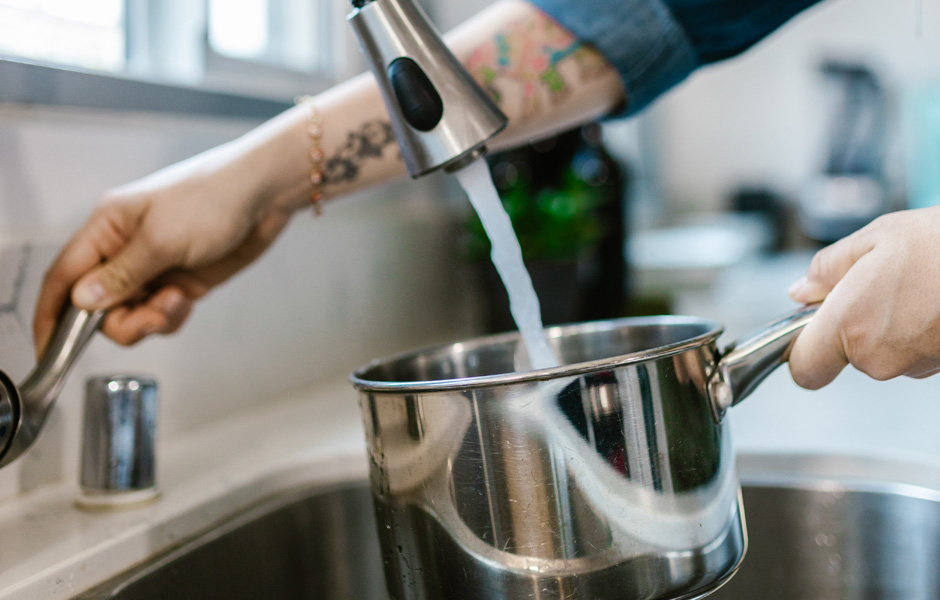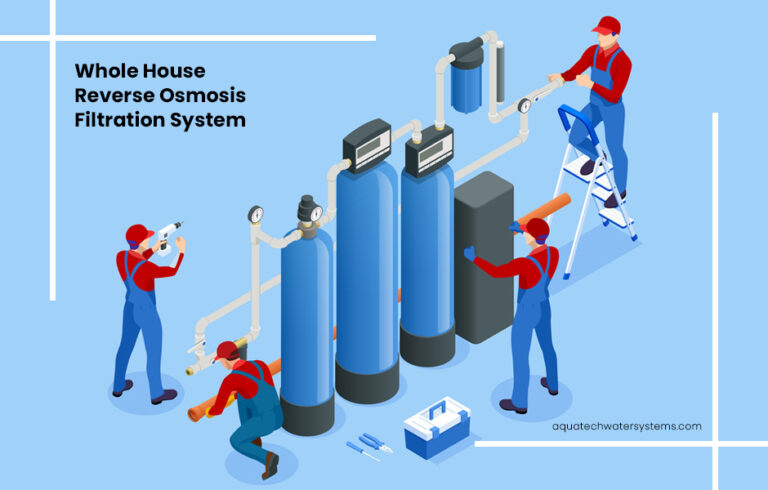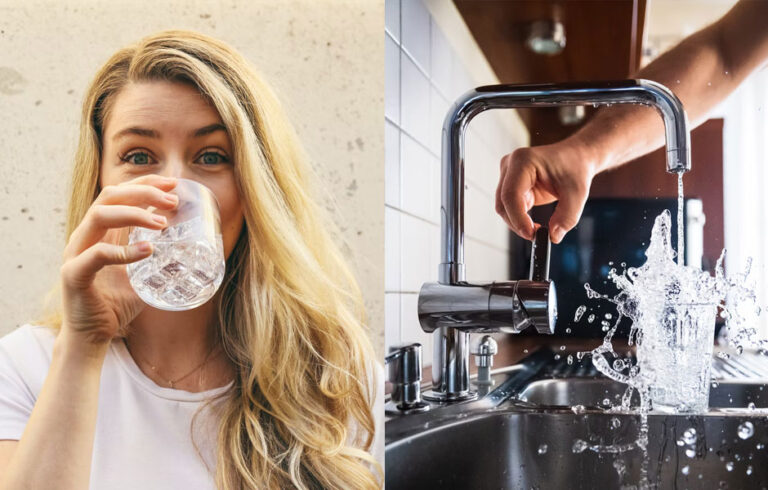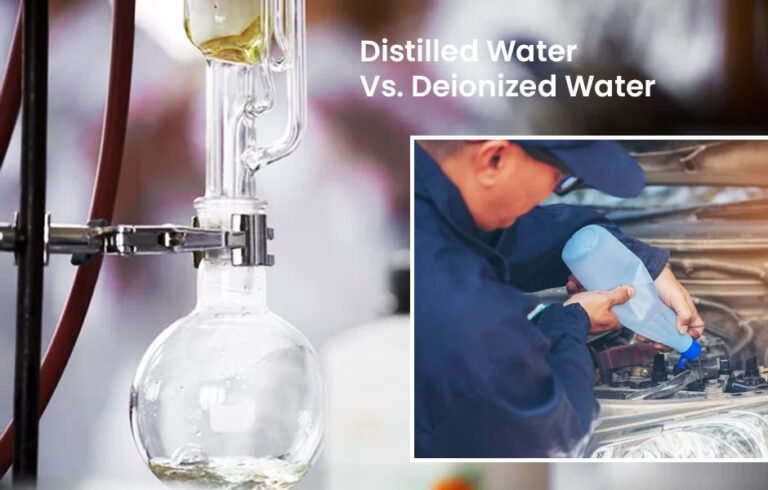Have you ever turned on your tap and noticed that the water is cloudy? Do you look at your tap water and think to yourself, “Why is it cloudy?” If so, you are not alone.
Many people have wondered why their tap water looks cloudy. If your tap water is significantly cloudy or has a strange color, it could be contaminated with bacteria or other pollutants.
Cloudy tap water is usually caused by dissolved minerals, such as calcium and magnesium. These minerals can come from the pipes that deliver water to your home or from the ground itself. When water dissolves these minerals, it can cause your water to look cloudy.
In this article, we will discuss the causes of cloudy tap water, what you can do about it and why it might not be safe to drink. We will also provide some tips on how to improve the clarity of your tap water.
Warning signs you should look for in your tap water
Some signs that water is starting to get cloudy are if it starts to look murky or has a strange color. If your tap water is significantly cloudy or has a strange color, it could be contaminated with organic or inorganic substances.
If you notice that water is starting to look discolored or has a strange odor, you should contact your local water authority or the EPA right away.
They can test your tap water to see if it is safe to drink and make sure that the cloudy tap water is not coming from a contaminated source. If not entirely unsafe or harmful to consume, having a foul odor in your drinking water can be uncomfortable.
Getting your water tested by a professional in such instances can determine the root cause of the problem and find a suitable solution.
What makes your tap water cloudy?
In most cases, it is perfectly safe to drink cloudy tap water. However, there are a few things that can cause your tap water to become cloudy. Let us take a look at some of the common causes of cloudy tap water.
Air bubbles
You will be surprised to know that even the clearest glass of water is quasi-cloudy due to the presence of air bubbles. When air bubbles get trapped in tap water, it can make the water look cloudy or even give it a fizzy appearance. This is usually not harmful and will dissipate over time. If you notice air bubbles in your tap water, let the water sit for a few minutes and see if the bubbles dissipate on their own.
Hard water
Hard water has a high concentration of minerals, such as calcium and magnesium. While it may not be particularly harmful for you to drink, cook with, bathe or clean the dishes – however, it can be a nuisance because it can leave behind deposits on your fixtures and appliances. If you have hard water, you might notice that your dishes have a film on them after they have been washed or that your hair feels straw-like after shampooing. Water softeners remain one of the most suggested ways to treat hard water.
Methane
Methane is a gas that is rarely found in tap water. When methane comes into contact with water, it can cause the water to become cloudy. Methane is flammable and can be explosive if present in high concentrations. Since methane is odorless, it becomes difficult to detect its presence. One way to understand is if you hear a bubbling noise coming out of your tap water. If you suspect that your tap water is cloudy because of methane, you should contact your local water authority or the EPA immediately.
TSS (Total Suspended Solids)
TSS is a measure of the amount of solid particles that are suspended in water. These particles can come from a variety of sources, including soil erosion, sewage effluent, storm-water runoff, and industrial wastewater discharge. Many of these particles are small enough to be invisible to the naked eye. However, they can still cause your tap water to look cloudy.
High levels of TSS in tap water can also make it difficult for you to use household cleaning products effectively because the suspended solids will interfere with the cleaning process. In addition, TSS can clog pipes and lead to other problems with your plumbing system.
Temperature change
Have you ever noticed that your tap water looks clearer in the summer than in the winter? This is because cold water is denser than warm water and, as a result, can hold more suspended particles.
When water temperature decreases, the molecules of water slow down and become closer together. This increase in density causes any suspended particles to fall to the bottom of the container. This is why your tap water may look cloudy when it is first drawn from the tap in the morning but will often clear up after sitting out for a while. Also, if you live in an area with hard water, you might notice that your tap water looks especially cloudy in the winter due to an increase in mineral content.
Water heater
If you have a water heater, the cause of your cloudy tap water is likely due to sediments that have built up in the bottom of your water heater over time. These sediments can be made up of a variety of materials, including minerals, rust, and dirt. As hot water sits in the bottom of your water heater, these sediments can become agitated and dissolve into the water. When this happens, you will notice that your tap water becomes cloudy. It can also clog your plumbing fixtures and appliances and lead to other problems down the road.
Other factors
Several other factors can cause tap water to become cloudy, such as algae growth in your water supply, bacteria, high levels of chlorine in your tap water, and a problem with your municipal water treatment plant.
If you are unsure about the cause of your cloudy tap water, it is always best to get in touch with an expert. In most cases, cloudy tap water is harmless and can be easily fixed. However, it is always better to be safe than sorry.
How to fix cloudy tap water?
Now that we have gone over some of the most common causes of cloudy tap water, let us talk about how to fix it.
Water Softeners
As discussed in this article, one of the most common causes of cloudy tap water is hard water. Hard water contains a high concentration of minerals like calcium and magnesium that can cause several problems and can be harmful to your body in the long run.
The best way to treat hard water is with a water softener. Water softeners work by removing the minerals from your tap water and replacing them with sodium ions. This process will improve the clarity of your tap water and prevent the buildup of scale in your pipes and appliances.
Reverse Osmosis
Another option for treating cloudy tap water is reverse osmosis. Reverse osmosis is a filtration system that removes impurities from your tap water by forcing it through a semipermeable membrane. This process will remove most suspended solids from your tap water, leaving you with clean, clear water.
Reverse osmosis is an effective and popular way to treat cloudy tap water. However, reverse osmosis systems can be expensive to install and maintain. Renting a reverse osmosis filtration system comes at a more reasonable price if you are not ready to purchase a RO water filter.
Also Read: Know the difference between RO water filters and water softeners
Check out our NEW products:
To Summarize:
If your tap water is cloudy, in most cases, all you need to do is let your tap water sit for a while so that the suspended particles have time to settle to the bottom of the container. However, this might not be practically possible every time you are thirsty and need drinking water right away or every time you need to use a large amount of water for cleaning and other purposes.
This is when you can think of water softeners or RO water filters.
While cloudy tap water is usually nothing to worry about, it is always best to err on the side of caution and get in touch with an expert if you are unsure about the cause. They will be able to help you troubleshoot the problem and find a solution that works for you.




